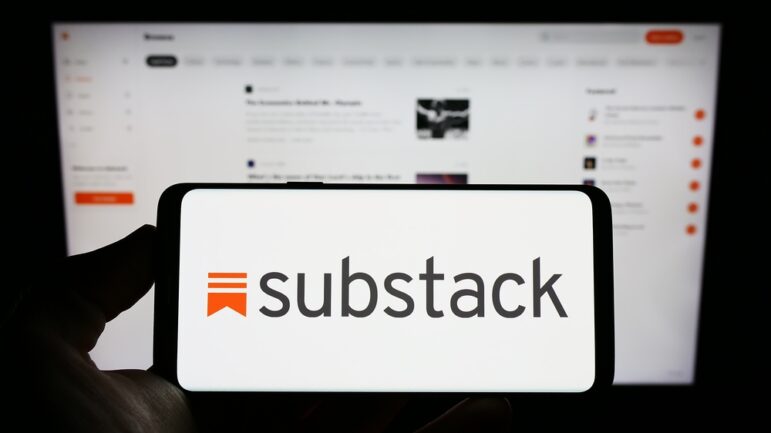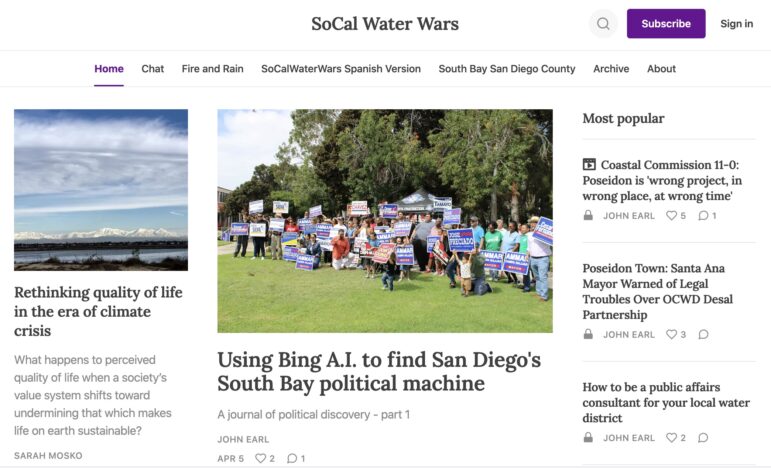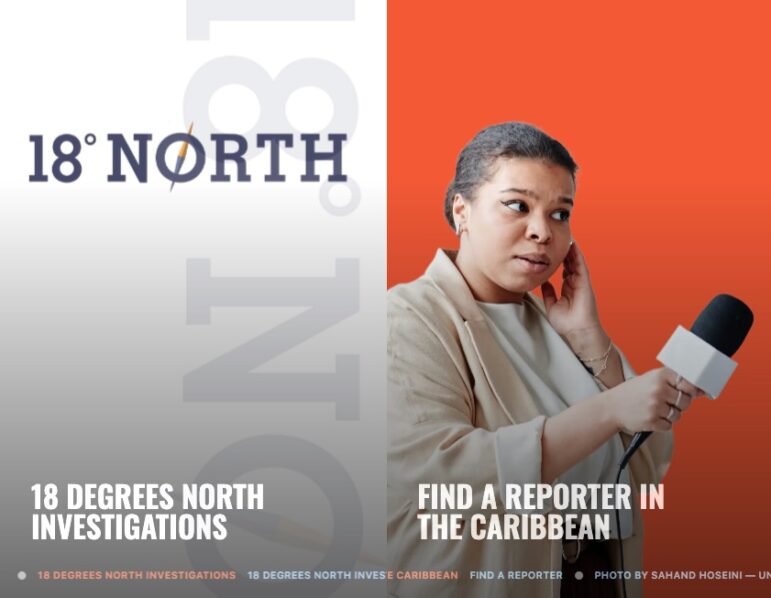

How Investigative Journalists Are Using Substack Newsletters

Image: Shutterstock
In 2017, a new publishing and newsletter platform, Substack, was launched based on a simple bet: if authors had the financial and editorial freedom to create high-quality content, readers would follow — and pay for it.
Since then, however, Substack’s reputation has been on something of a rollercoaster. Its popularity grew rapidly early on and its potential impact on the future of journalism seemed profound. During the first three months of the COVID-19 pandemic, Substack CEO Chris Best said that readership and writership doubled. In early 2023, the company announced it had reached two million paid subscriptions and claimed 50.4 million total monthly visits. According to the Press Gazette, the 27 highest-earning email newsletters on the platform generate at least US$22 million in revenue annually.
However, Substack has also made the wrong kind of headlines at times. It’s drawn criticism as a platform that allows for publishing unvetted information or outright misinformation, for amplifying writers or figures with extremist agendas, and for poaching high-profile journalists and columnists from legacy media by paying them to publish on their platform.
Substack Basics
Substack is free for publishers to use until the launch of any paywalls, then the site takes 10% of any revenue. In addition, Substack’s partner payment service, Stripe — which makes payouts to publishers’ bank accounts — takes about 2.9% of the billing rate monthly, and 30 cents per transaction. (This handy tool estimates how much publishers can make per month by letting you adjust subscription numbers and paywall prices — for instance, 200 subscribers paying US$5 a month would net US$811 a month.) Publishers can choose to keep some content free, or none.
But Substack differs from pure newsletter marketing platforms such as Mailchimp, because its content exists on a homepage in addition to appearing in email inboxes. It also has built-in support for design and analytics. And, of particular note to investigative journalists, Substack offers a support program called Defender, which provides free assistance with things like pre-publication legal review and responding to cease-and-desist letters — although this feature is currently only available for US-based users who use the platform for professional work.
Substack makes it relatively simple to cross-promote other newsletters, as well as content from other platforms such as YouTube, and now, podcasts. Until recently, the same was true for Twitter, where many newsletters draw their traffic. But Twitter recently disabled much of the functionality of promoting Substack sites on its platform (and even blocked searches for the term “Substack”), apparently in response to the launch of Substack’s new social media-like feature, Notes, which went live on April 11.
Viability for Investigative Journalism
As with newsletters and any paid content, it helps to have a reporting niche and an audience or following. The big question for watchdog reporters, of course, is how to monetize that audience, even with a proven body of work.
Journalist Simon Owens argues in his own Substack media newsletter that investigative journalism can be viable on the platform. “There’s this misconception about Substack that only opinion writers can thrive on its platform… (that) traditional journalism — the kind where reporters meet with and interview sources — is too time intensive and would prevent a writer from publishing at a high enough frequency to succeed,” he wrote. As an example, he cited Judd Legum, founder and former editor-in-chief of ThinkProgress, who writes the Popular Information newsletter. Legum now has a paid staff and more than 150,000 subscribers — around 7,500 paid — and regularly breaks major stories on US politics. But Owens concedes that Legum did not start as an unknown entity — when he launched Popular Information, he already had over 500,000 Twitter followers.
To get a better sense of the investigative journalism landscape on Substack, GIJN spoke with journalists who both use the platform to publish original investigative reporting, and who are not part of a larger news or media organization. We look at the different ways watchdog reporters have used the platform, and distill some experiences and lessons learned.
Case Studies
Geneva Health Files
Priti Patnaik publishes Geneva Health Files, an investigative newsletter reporting on power and politics in global health. As a journalist with 20 years experience — and a decade as a freelancer — reporting on economics, trade, law, and public health issues across New Delhi, New York, and Geneva, Patnaik was attracted by the promise of having more flexibility and control over the publishing process. She started Geneva Health Files initially as a WordPress site in April 2020, then launched on Substack in August, and started putting exclusive content behind a paywall in March 2021.

Priti Patnaik is a solo journalist running the Geneva Health Files Substack newsletter. Image: Courtesy of Patnaik
“I always found it difficult as a freelance journalist to quickly pitch and report stories, and the news cycle moved fast in the early days of the pandemic,” she says. “When the pandemic happened, it was the inflection point that pushed me to launch this. I knew it was a very important story that we were witnessing.”
Patnaik says the platform is easy to use and intuitive, and the monetization tech it provides is particularly helpful. “The fact that Substack made it so easy was really a game changer,” she says. Readers can sign up for an annual subscription for €150 (US$160), or €15 monthly (US$16), or for only free content. Geneva Health Files has more than 4,000 subscribers, of which a few hundred are paid.
“The challenge, as for any other newsletter publisher, is to convert the free list into more meaningful numbers in terms of paying readers,” Patnaik says. “We initially converted 15% of our free list into paying subscribers. But in and of itself, that’s not enough to be sustainable. So the focus really is about trying to provide great content and getting readers to pay.”
SoCal Water Wars
John Earl writes the SoCal Water Wars Substack newsletter. His background is in local activism and journalism in southern California, and he has reported on water management issues for over 16 years. He was a co-owner/founder and editor of the OC [Orange Coast] Voice, a monthly newspaper, from 2006-2009.

John Earl launched the SoCal Water Wars Substack after covering water issues in southern California for 16 years. Image: Screenshot, SoCal Water Wars
He was an early adopter of Substack, starting his newsletter in December 2019, and now has almost 600 subscribers. However, just 17 of them are paying.
Earl chose Substack because it “takes care of most of the email, newsletter, and payment technicalities, whereas before it was too complicated and required too much of my time.” Some similar services require a monthly subscription upfront, before you make any revenue. “I figured that it would take me a while to start making any real money, and I like Substack because I only pay a small percentage as I earn.”
Undue Influence
Australia-based writer and researcher Michelle Fahy reports on the connections between the Australian government and the weapons industry for various publications and media. Fahy mainly uses her Substack, Undue Influence, as an archive for her independent investigative reporting.

Michelle Fahy’s Substack serves as a home base for all her coverage of the Australian defense industry. Image: Courtesy of Fahy
“Because I am a specialist reporter in a complex and difficult field, I want my pieces to appear in one location for those few people who follow this area,” she says. She started publishing on Substack in March 2020 with a “mixed model” of free and paid content. Readers can subscribe annually for AUS$90 (US$61) or monthly for AUS$10 (US$7).
Fahy spends only a small amount of time on Substack: “I upload my pieces when they are published and I respond to reader emails, that’s it.” She estimates that she gets around 60% of her revenue from paid Substack subscriptions. She doesn’t spend time promoting the Substack, but does have an eye on expanding readership. “I am committed to keeping this reporting freely available to increase the audience.”
18 Degrees North Investigations
Zahra Burton, a Jamaican journalist and former Bloomberg TV reporter in New York, launched the investigative TV news magazine, 18 Degrees North — named for Jamaica’s latitude coordinate — in 2013. Covering Jamaica and the Caribbean, that program ran for five years, but Burton found the work involved too time-consuming. “I was looking for a platform where I could put my stuff out and continue reporting, because TV was taking too much out of me,” she recalls. “I came across Substack and decided, “OK, I’m gonna give this thing a shot.’”

Image: Courtesy of Burton
Burton launched a paywalled 18 Degrees North Investigations Substack — covering stories in the Caribbean with a global impact — in March 2020. Three years on, the newsletter has over 3,800 subscribers. So far, only a small number of them are paid, but she says that — after the pandemic had slowed down her production somewhat — these numbers are now steadily increasing. Readers can sign up annually for US$100, monthly for $10, or get limited access for free.
Lessons Learned
Bring an audience with you. Patnaik has been able to capitalize on a diverse, multidisciplinary reporting career and her established brand focusing on global health policy. “We try to get information that is not easily available in the public domain, and also to look at issues in an interdisciplinary manner,” she says.
When Burton launched her Substack, she already had a built-in audience from the 18 Degrees North TV news program launched in 2013, which drew hundreds of thousands of viewers each week. But the newsletter has allowed her to further expand her reach. “The audience I am now getting is not necessarily 18 Degrees North [TV show] fans, per se, they are just people who want to see better governance in Jamaica,” she says. “So I have more and more people signing up for that reason.”
Have some side hustles. Producing regular content for a newsletter is difficult, and it can take a lot of effort before a newsletter is self-sustaining, if ever.
Burton says she now spends about 80% of her time on producing the Substack, but it’s not her only product or source of revenue. Her company, Global Reporters for the Caribbean, is a news organization that also distributes content, such as Caribbean films, shows, and documentaries. And she does occasional freelance work for other outlets.
Before the pandemic and his Substack launch, Earl drove for Uber to supplement reporting grants and occasional donations. After the pandemic, a small financial windfall made it feasible for him to focus entirely on writing again, and developing his Substack audience.
Geneva Health Files is Patnaik’s full-time job (“it’s a one-person newsroom-slash-operation”) but she does various things to supplement her business, such as research projects and consulting, and publishing a book. Having additional “editorial products” helps to build a reputation: “It’s a declaration that you are here, and your work has to be taken seriously,” she says. Last year, Geneva Health Files received an Open Society grant that will fund reporting of global health negotiations in Geneva. She also launched the Geneva Health Files fellowship to attract experts interested in getting a better understanding of global health and journalism, and recently held a workshop on running a newsletter.
Publishing frequency is a key challenge. Burton notes that in Jamaica, she has noticed a “sea change” in that people seem to be more willing to pay for content. But because investigative journalism takes a long time to put together, there were times she wasn’t publishing as much, which is when some readers decided to unsubscribe. “I realized that content is what they’re going to keep paying for,” she says. “The biggest challenge is trying to find that balance: How do you keep putting out accountability journalism, frequently? I would say for investigative journalism to thrive on Substack, I don’t think it can just be you alone. I think you have to have other people working with you.”
To keep the reporting momentum going, Earl focuses on keeping a set schedule. “Publish consistently and at least weekly, but put quality research and reporting first,” he explains. “Try to break your reporting down into smaller posts — it makes your writing more readable and leaves readers waiting for more.”
Consider scaling up or having reporting partners. Patnaik launched a fellowship program and has occasional volunteers to help develop Geneva Health Files. Burton has taken on a few other writers so she can publish more frequently. “I’ve noticed that as I produce more often on the platform this year — publishing every couple of days on average — I’m starting to get more paid subscribers,” she explains. “And so with that, the hope is this year, 2023, we can see a lot more content on the platform than we had before.”
Uncertain Future
Even with the growing number of platforms for monetizing content, going it alone is a tough road. The 2022 Digital News Report from the Reuters Institute for the Study of Journalism noted that “the ‘Substack revolution’ for news” — in other words, solo journalist-led businesses — is still mostly a US phenomenon.
The author of the report’s email news chapter, Reuters Institute’s Nic Newman, points out that Substack remains a niche market. “Overall, around 8% of subscribers in the US are paying for individual newsletters,” he explains. “That’s still a very, very small number.”
“What Substack has done is, I think, proved itself as a valuable new layer, and a way for individuals to make money,” adds Newman. “But I think it’s very hard to keep going. Personal pressures and expectations have led many people who started out with Substack to rethink, because it’s a really tough way of making money.”
“Subtack as a whole has proved that in certain niches, you can make connections, you can build sustainable businesses,” he says, “there’s just not many examples.”
Additional Resources
Five Inspiring Investigative Newsletters
How a Polish Nonprofit Newsroom Developed a Loyal Audience by Going ‘Newsletter First’
How Africa Confidential Covers the Continent with a Subscription Model that Works
 Alexa van Sickle is an associate editor at GIJN. She was previously a senior editor for the foreign correspondence magazine Roads and Kingdoms. She has also been an editor at the International Institute for Strategic Studies and a publisher at an international law nonprofit in London. She lives in Vienna, Austria.
Alexa van Sickle is an associate editor at GIJN. She was previously a senior editor for the foreign correspondence magazine Roads and Kingdoms. She has also been an editor at the International Institute for Strategic Studies and a publisher at an international law nonprofit in London. She lives in Vienna, Austria.









